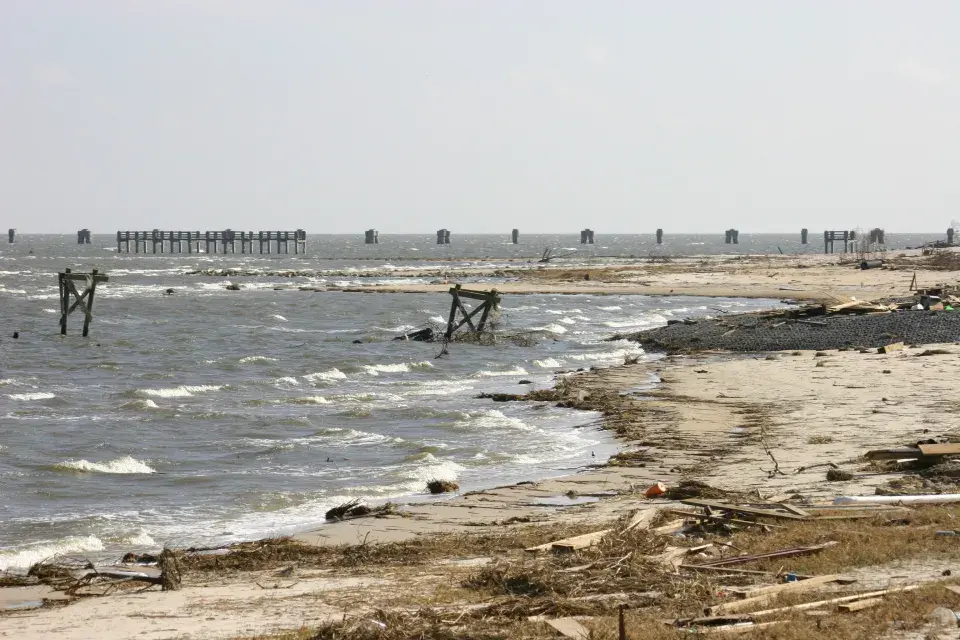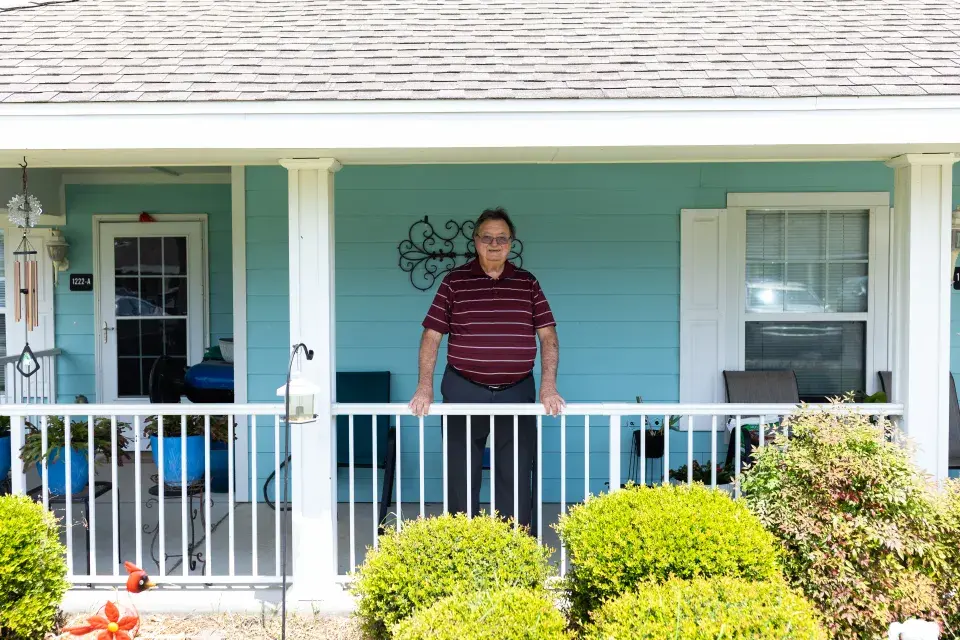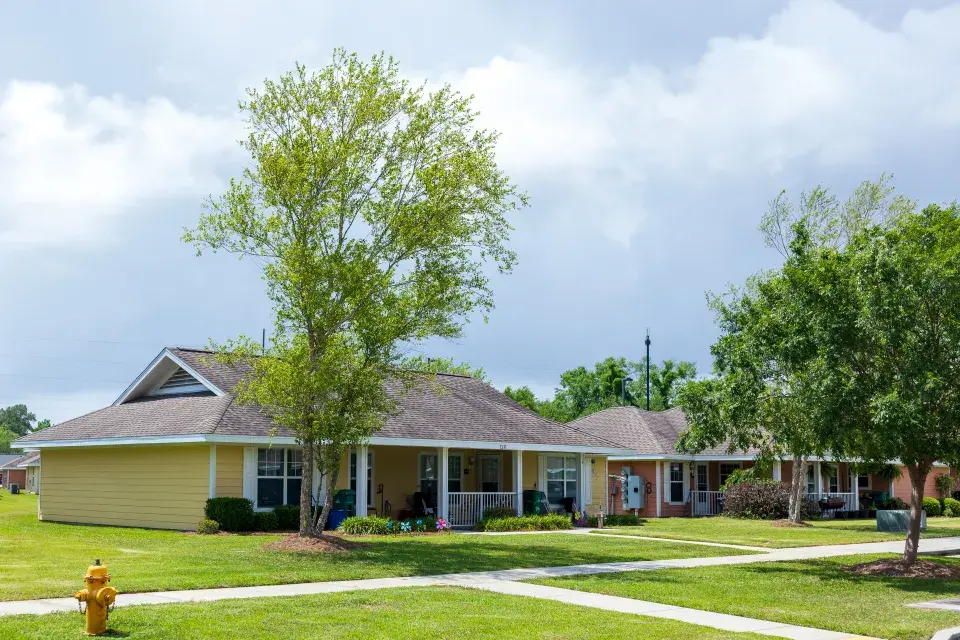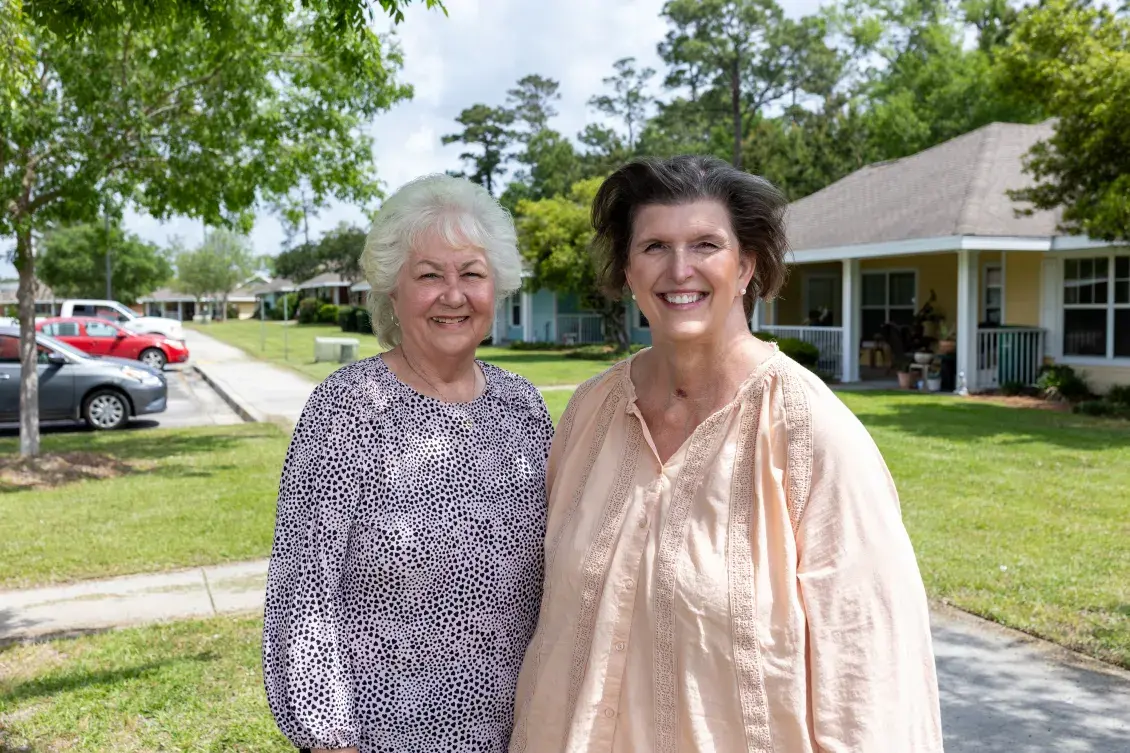When Karen Ladner heard that a major hurricane was heading for her town in August of 2005, she immediately thought about the residents who lived in affordable homes at her housing authority in Waveland, Mississippi.
“After we went and picked up everything in the yards, I wrote a little letter telling them I needed to know where they were going for evacuation,” said Ladner, who was executive director of Bay Waveland Housing Authority in this Gulf Coast community. “To this day, I don’t know where some of them went, but I do know they all survived.”
The eyewall of Hurricane Katrina passed directly over the city, resulting in high winds and a massive storm surge that battered the community and destroyed all the area’s public housing. The damage was part of the broad destruction on the Mississippi Gulf Coast, where more than 60,000 homes were lost.
We spoke with Ladner recently about her experience during the storm, her career that was bookended by major hurricanes, and how she persisted after Hurricane Katrina to oversee construction of resilient senior housing communities and the first public housing project rebuilt in Hancock County after the storms.

Before the Storm This was always a quiet place. We had a lot of Louisiana people who lived here who had summer homes. I was running the Waveland Housing Authority, which had properties in Waveland, one on Camille Circle, one off Waveland Avenue. I'd been working in housing since I was just out of high school, starting after Hurricane Camille in 1969. [The Waveland Housing Authority merged to become the Bay Waveland Housing Authority after Katrina]
Even before Katrina, I could see how hard it was getting for people. When I first started, rent was 25% of a person's income, then they increased it to 30%. It was hard on people —sometimes they had to choose between medicine or food. We'd send them to food banks to get help. The elderly especially lived on fixed incomes, and I saw how much they needed help. That's why, after the storm, I thought I was going to be smart and focus on building elderly units.

When Katrina Hit When we heard hurricane, we had to get all the tenants settled. My maintenance went and picked up everything in the yards. We didn't find out till Friday night that there was a 60-foot wave coming.
My family went to the NASA test site near us — my camper was packed to go camping for ten days. But when we got there, they said the buildings were full. I told the guy, "Don't you have a police department out here? Well, go get out 32 handcuffs cause you're going to need them." We were going in.

Coming Back to Nothing We couldn't come back right away. There was nothing here. The water was everywhere. I had nine feet of water in my house. This property had about four feet, but my office had about six feet. They had boats on top of houses — you just wouldn't believe it.
My house stood, but I had a tree in it and nine feet of water. Everybody did. We couldn't use phones. We'd have to go to the interstate or to the beach to get phone service. We slept on my sister's porch for two weeks. It was terrible.
The Recovery It took a long time. We were just glad to have a roof over our heads. They gave us the little campers. Tommy Longo was the mayor of our town, and he sent me to a camper. I said, "Tommy, what am I going to do? We don't have any units - we're just taking them down."
It took us until 2015 to close out the FEMA contract, ten years after the storm.

Learning the Hard Way Katrina was a learning experience for everybody. I only rented units — I never built them before. When some guys from Atlanta came to my office and asked, "Where's your workers?" I said, "It's me." They said, "You have to get somebody to help you." I said, "No joke. I'm about to have a nervous breakdown."
When you lose almost everything, and everybody that worked at the housing authority lost everything, and then you're trying to build back for people that needed help, it creates multiple layers of stress.
The Breaking Point At one point, I was coming to work one morning, driving by St. Ann's church right down the road from us. I pulled in front of the church, and I said, "Lord, I love helping people and I want to help people, but you have got to take this burden off of me so I can do what I have to do."
I was managing eight insurance claims myself, trying to build back my own house and build public housing. When tenants would call me and say, "What am I going to do?" I'd give them advice: "Just stay where you are right now. You have to make it work. There's no place here to come back to right now."
Rebuilding – Finally We did the tax credit application in 2007 but then lost our investor when the bottom fell out in 2008. The Mississippi Development Authority stepped in with a bridge loan until we found Enterprise as our investor. [Developers eventually closed on the financing in 2010 with the help of Enterprise and American Express Center for Community Development. The $15.8 million community was financed with Gulf Opportunity Zone housing tax credits from the Mississippi Home Corp. The tax credits provided roughly $7 million in equity from investor American Express through Enterprise.]
Oak Haven was ready to lease in August 2010. Bay Pines got leased up in June 2011. We built really nice units - two and three bedrooms, some with garages.
A lot of my former tenants came back. Believe it or not, many had my cell phone number. They'd call me and say, "Karen, I'm in Tennessee and I want to come home." I'd tell them, "We're building units - when we get them built, you can come back home."
We had 50 FEMA campers on the Waveland property. I negotiated to make sure some of my displaced tenants could get trailers there. I told the officials, "I think the people that lived here should have a chance to come back to their little hometown."

What It All Meant I always told people that the housing is a steppingstone to get you on your feet and then move forward. I helped tenants learn to budget, and several got VA loans to buy their own homes.
I started out in housing after Hurricane Camille in 1969, just out of high school. Don McIntyre hired me to be his secretary, and I never left. I loved helping people. When I was ready to retire, I wanted to train someone who had a heart to help people — that's what we're here for. Not just to do your job, but to care for the people you help.
Twenty Years Later Now we just hope we don't get another one like Katrina. It's hard to believe it's been that long. We've come a long way, but there are still places that have never been rebuilt.
The insurance is killing us now - $250,000 a year just for wind and hail coverage on our developments. But you know what? You just move on.
A hurricane is different from a tornado or earthquake because you know when it's coming. You can prepare. But Katrina taught everybody - residents, officials, agencies - lessons we'd never had to learn before.
I'm enjoying my grandchildren now that I’m retired, but I still have former residents come up to me and say, "Miss Karen, how you doing?" Some of them were little kids when they lived in our housing, and now they're all grown up. That's the reward — seeing people move forward with their lives, knowing you helped them when they needed it most.
